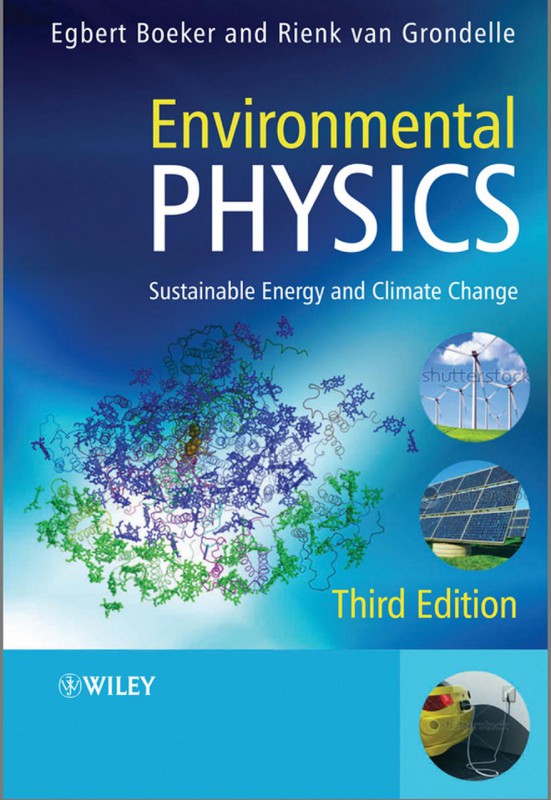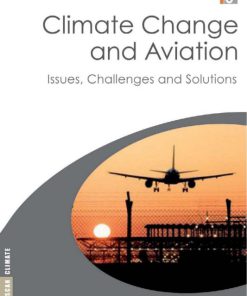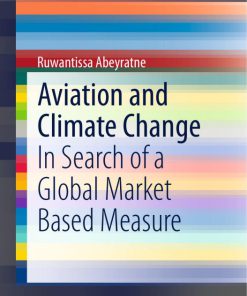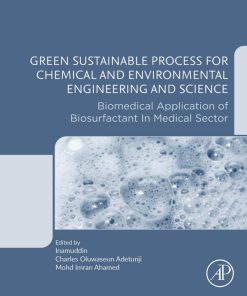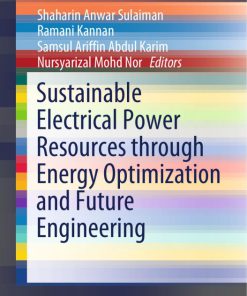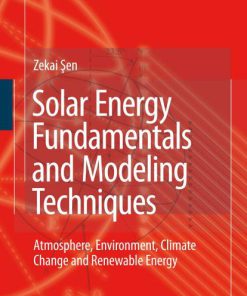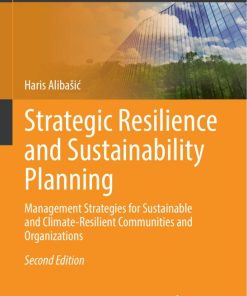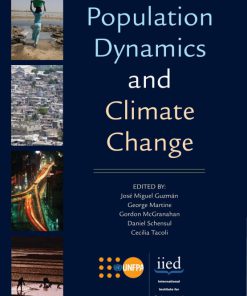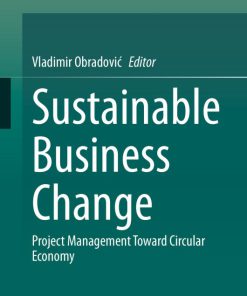(Ebook PDF) Environmental Physics Sustainable Energy and Climate Change 3rd edition by Egbert Boeker, Rienk van Grondelle 1118303369 9781118303368 full chapters
$50.00 Original price was: $50.00.$25.00Current price is: $25.00.
Authors:Egbert Boeker, Rienk van Grondelle , Series:Physics [6] , Author sort:Egbert Boeker, Rienk van Grondelle , Languages:Languages:eng , Publisher:Wiley
Environmental Physics Sustainable Energy & Climate Change 3rd edition by Egbert Boeker, Rienk van Grondelle – Ebook PDF Instant Download/DeliveryISBN: 1118303369, 9781118303368
Full download Environmental Physics Sustainable Energy & Climate Change 3rd edition after payment.
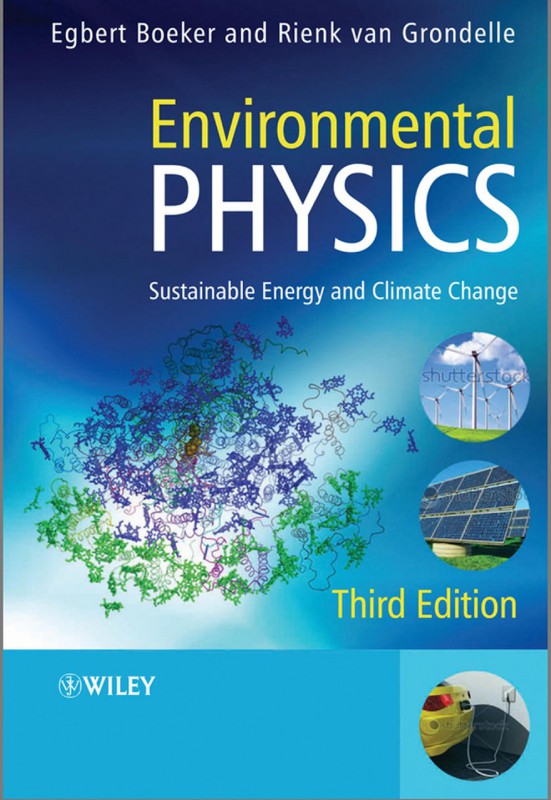
Product details:
ISBN-10 : 1118303369
ISBN-13 : 9781118303368
Author : Egbert Boeker, Rienk van Grondelle
This thoroughly revised and updated third edition focuses on the utilization of sustainable energy and mitigating climate change, serving as an introduction to physics in the context of societal problems.
Environmental Physics Sustainable Energy & Climate Change 3rd Table of contents:
1 Introduction
1.1 A Sustainable Energy Supply
1.2 The Greenhouse Effect and Climate Change
1.3 Light Absorption in Nature as a Source of Energy
1.4 The Contribution of Science: Understanding, Modelling and Monitoring
Exercises
References
2 Light and Matter
2.1 The Solar Spectrum
2.1.1 Radiation from a Black Body
2.1.2 Emission Spectrum of the Sun
2.2 Interaction of Light with Matter
2.2.1 Electric Dipole Moments of Transitions
2.2.2 Einstein Coefficients
2.2.3 Absorption of a Beam of Light: Lambert-Beer’s Law
2.3 Ultraviolet Light and Biomolecules
2.3.1 Spectroscopy of Biomolecules
2.3.2 Damage to Life from Solar UV
2.3.3 The Ozone Filter as Protection
Exercises
References
3 Climate and Climate Change
3.1 The Vertical Structure of the Atmosphere
3.2 The Radiation Balance and the Greenhouse Effect
3.2.1 Simple Changes in the Radiation Balance
3.2.2 Radiation Transfer
3.2.3 A Simple Analytical Model
3.2.4 Radiative Forcing and Global Warming
3.2.5 The Greenhouse Gases
3.3 Dynamics in the Climate System
3.3.1 Horizontal Motion of Air
3.3.2 Vertical Motion of Ocean Waters
3.3.3 Horizontal Motion of Ocean Waters
3.4 Natural Climate Variability
3.5 Modelling Human-Induced Climate Change
3.5.1 The Carbon Cycle
3.5.2 Structure of Climate Modelling
3.5.3 Modelling the Atmosphere
3.5.4 A Hierarchy of Models
3.6 Analyses of IPCC, the Intergovernmental Panel on Climate Change
3.7 Forecasts of Climate Change
Exercises
References
4 Heat Engines
4.1 Heat Transfer and Storage
4.1.1 Conduction
4.1.2 Convection
4.1.3 Radiation
4.1.4 Phase Change
4.1.5 The Solar Collector
4.1.6 The Heat Diffusion Equation
4.1.7 Heat Storage
4.2 Principles of Thermodynamics
4.2.1 First and Second Laws
4.2.2 Heat and Work; Carnot Efficiency
4.2.3 Efficiency of a ‘Real’ Heat Engine
4.2.4 Second Law Efficiency
4.2.5 Loss of Exergy in Combustion
4.3 Idealized Cycles
4.3.1 Carnot Cycle
4.3.2 Stirling Engine
4.3.3 Steam Engine
4.3.4 Internal Combustion
4.3.5 Refrigeration
4.4 Electricity as Energy Carrier
4.4.1 Varying Grid Load
4.4.2 Co-Generation of Heat and Electricity
4.4.3 Storage of Electric Energy
4.4.4 Transmission of Electric Power
4.5 Pollution from Heat Engines
4.5.1 Nitrogen Oxides NOx
4.5.2 SO2
4.5.3 CO and CO2
4.5.4 Aerosols
4.5.5 Volatile Organic Compounds VOC
4.5.6 Thermal Pollution
4.5.7 Regulations
4.6 The Private Car
4.6.1 Power Needs
4.6.2 Automobile Fuels
4.6.3 Three-Way Catalytic Converter
4.6.4 Electric Car
4.6.5 Hybrid Car
4.7 Economics of Energy Conversion
4.7.1 Capital Costs
4.7.2 Learning Curve
Exercises
References
5 Renewable Energy
5.1 Electricity from the Sun
5.1.1 Varying Solar Input
5.1.2 Electricity from Solar Heat: Concentrating Solar Power CSP
5.1.3 Direct Conversion of Light into Electricity: Photovoltaics PV
5.2 Energy from the Wind
5.2.1 Betz Limit
5.2.2 Aerodynamics
5.2.3 Wind Farms
5.2.4 Vertical Wind Profile
5.2.5 Wind Statistics
5.2.6 State of the Art and Outlook
5.3 Energy from the Water
5.3.1 Power from Dams
5.3.2 Power from Flowing Rivers
5.3.3 Power from Waves
5.3.4 Power from the Tides
5.4 Bio Energy
5.4.1 Thermodynamics of Bio Energy
5.4.2 Stability
5.4.3 Solar Efficiency
5.4.4 Energy from Biomass
5.5 Physics of Photosynthesis
5.5.1 Basics of Photosynthesis
5.5.2 Light-Harvesting Antennas
5.5.3 Energy Transfer Mechanism
5.5.4 Charge Separation
5.5.5 Flexibility and Disorder
5.5.6 Photoprotection
5.5.7 Research Directions
5.6 Organic Photocells: the Gr¨atzel Cell
5.6.1 The Principle
5.6.2 Efficiency
5.6.3 New Developments and the Future
5.6.4 Applications
5.7 Bio Solar Energy
5.7.1 Comparison of Biology and Technology
5.7.2 Legacy Biochemistry
5.7.3 Artificial Photosynthesis
5.7.4 Solar Fuels with Photosynthetic Microorganisms: Two Research Questions
5.7.5 Conclusion
Exercises
References
6 Nuclear Power
6.1 Nuclear Fission
6.1.1 Principles
6.1.2 Four Factor Formula
6.1.3 Reactor Equations
6.1.4 Stationary Reactor
6.1.5 Time Dependence of a Reactor
6.1.6 Reactor Safety
6.1.7 Nuclear Explosives
6.2 Nuclear Fusion
6.3 Radiation and Health
6.3.1 Definitions
6.3.2 Norms on Exposure to Radiation
6.3.3 Normal Use of Nuclear Power
6.3.4 Radiation from Nuclear Accidents
6.3.5 Health Aspects of Fusion
6.4 Managing the Fuel Cycle
6.4.1 Uranium Mines
6.4.2 Enrichment
6.4.3 Fuel Burnup
6.4.4 Reprocessing
6.4.5 Waste Management
6.4.6 Nonproliferation
6.5 Fourth Generation Nuclear Reactors
Exercises
References
7 Dispersion of Pollutants
7.1 Diffusion
7.1.1 Diffusion Equation
7.1.2 Point Source in Three Dimensions in Uniform Wind
7.1.3 Effect of Boundaries
7.2 Dispersion in Rivers
7.2.1 One-Dimensional Approximation
7.2.2 Influence of Turbulence
7.2.3 Example: A Calamity Model for the Rhine River
7.2.4 Continuous Point Emission
7.2.5 Two Numerical Examples
7.2.6 Improvements
7.2.7 Conclusion
7.3 Dispersion in Groundwater
7.3.1 Basic Definitions
7.3.2 Darcy’s Equations
7.3.3 Stationary Applications
7.3.4 Dupuit Approximation
7.3.5 Simple Flow in a Confined Aquifer
7.3.6 Time Dependence in a Confined Aquifer
7.3.7 Adsorption and Desorption of Pollutants
7.4 Mathematics of Fluid Dynamics
7.4.1 Stress Tensor
7.4.2 Equations of Motion
7.4.3 Newtonian Fluids
7.4.4 Navier-Stokes Equation
7.4.5 Reynolds Number
7.4.6 Turbulence
7.5 Gaussian Plumes in the Air
7.5.1 Statistical Analysis
7.5.2 Continuous Point Source
7.5.3 Gaussian Plume from a High Chimney
7.5.4 Empirical Determination of the Dispersion Coefficients
7.5.5 Semi-Empirical Determination of the Dispersion Parameters
7.5.6 Building a Chimney
7.6 Turbulent Jets and Plumes
7.6.1 Dimensional Analysis
7.6.2 Simple Jet
7.6.3 Simple Plume
Exercises
References
8 Monitoring with Light
8.1 Overview of Spectroscopy
8.1.1 Population of Energy Levels and Intensity of Absorption Lines
8.1.2 Transition Dipole Moment: Selection Rules
8.1.3 Linewidths
8.2 Atomic Spectra
8.2.1 One-Electron Atoms
8.2.2 Many-Electron Atoms
8.3 Molecular Spectra
8.3.1 Rotational Transitions
8.3.2 Vibrational Transitions
8.3.3 Electronic Transitions
8.4 Scattering
8.4.1 Raman Scattering
8.4.2 Resonance Raman Scattering
8.4.3 Rayleigh Scattering
8.4.4 Mie Scattering
8.4.5 Scattering in the Atmosphere
8.5 Remote Sensing by Satellites
8.5.1 ENVISAT Satellite
8.5.2 SCIAMACHY’s Operation
8.5.3 Analysis
8.5.4 Ozone Results
8.6 Remote Sensing by Lidar
8.6.1 Lidar Equation and DIAL
8.6.2 Range-Resolved Cloud and Aerosol Optical Properties
Exercises
References
9 The Context of Society
9.1 Using Energy Resources
9.1.1 Energy Consumption
9.1.2 Energy Consumption and Resources
9.1.3 Energy Efficiency
9.1.4 Comparing Energy Resources
9.1.5 Energy Options
9.1.6 Conclusion
9.2 Fresh Water
9.3 Risks
9.3.1 Small Concentrations of Harmful Chemicals
9.3.2 Acceptable Risks
9.3.3 Small Probability for a Large Harm
9.3.4 Dealing with Uncertainties
9.4 International Efforts
9.4.1 Protection of the Ozone Layer
9.4.2 Protection of Climate
9.5 Global Environmental Management
9.5.1 Self-Organized Criticality
9.5.2 Conclusion
9.6 Science and Society
9.6.1 Nature of Science
9.6.2 Control of Science
9.6.3 Aims of Science
9.6.4 A New Social Contract between Science and Society
People also search for Environmental Physics Sustainable Energy & Climate Change 3rd:
types of phenomena in psychology
types of phenomenon in psychology
5 examples of concepts in psychology
interesting phenomena in psychology
a concept in psychology
You may also like…
eBook PDF
Population Dynamics and Climate Change 1st Edition by United Nations ISBN 089714919X 9780897149198

